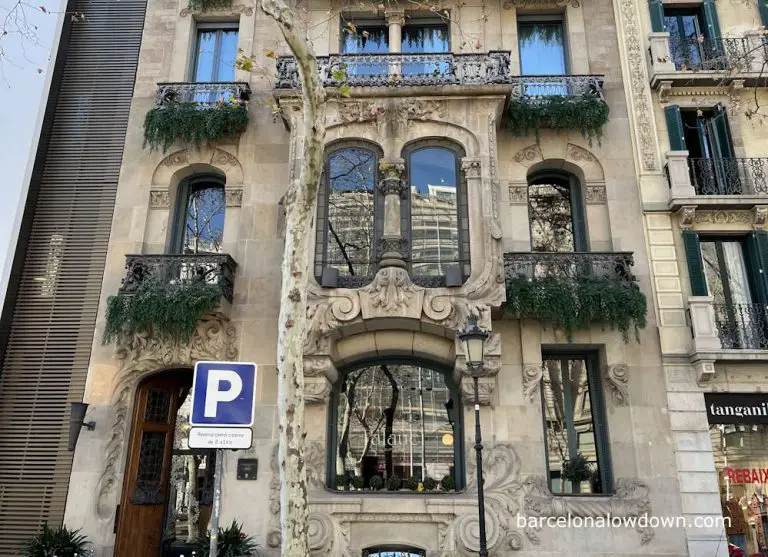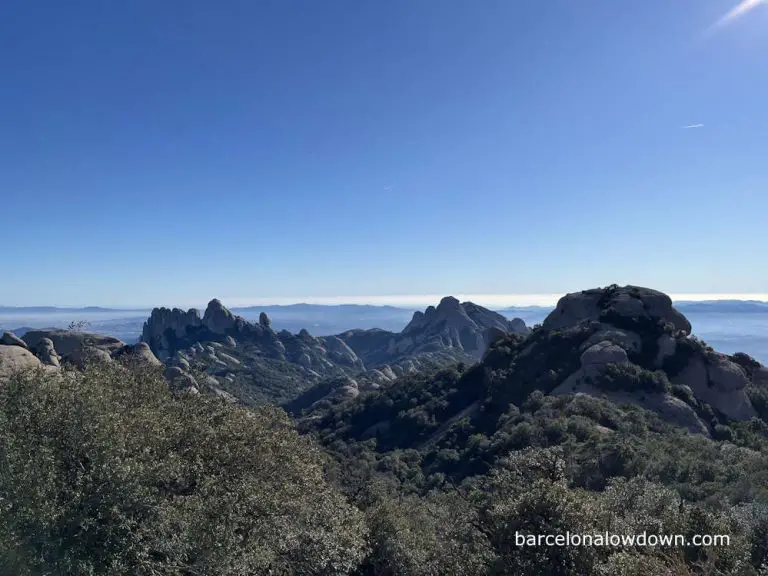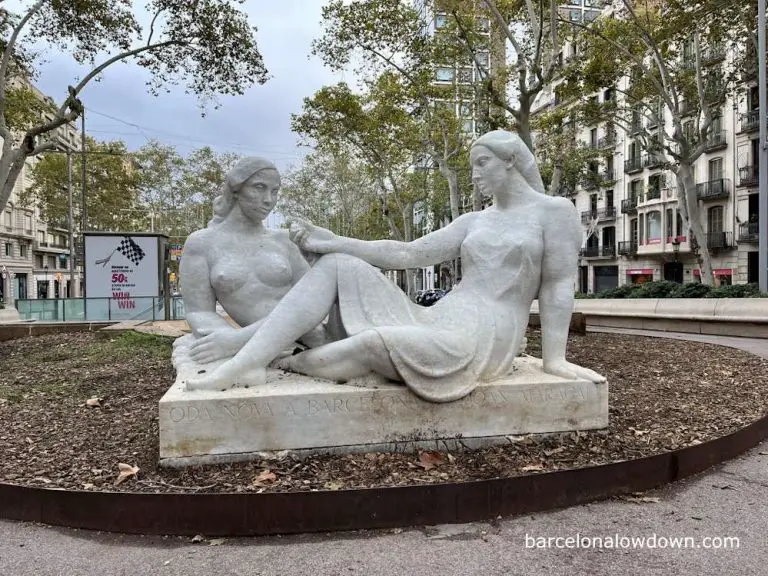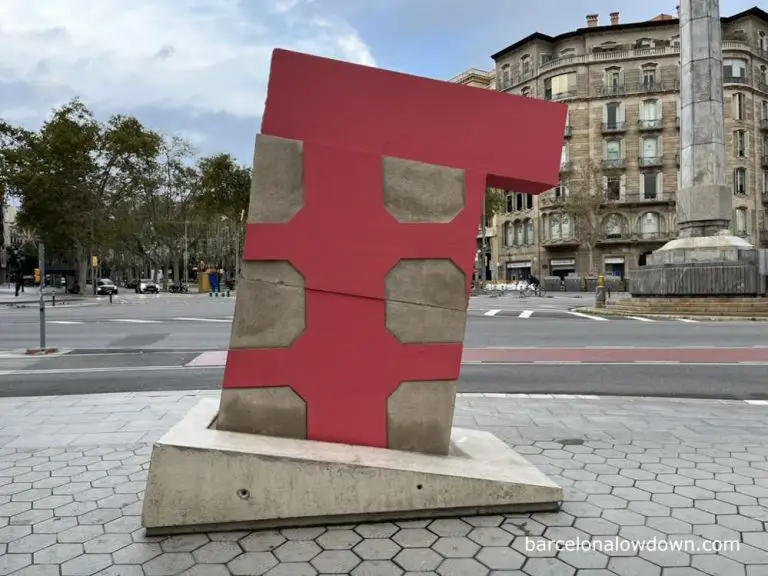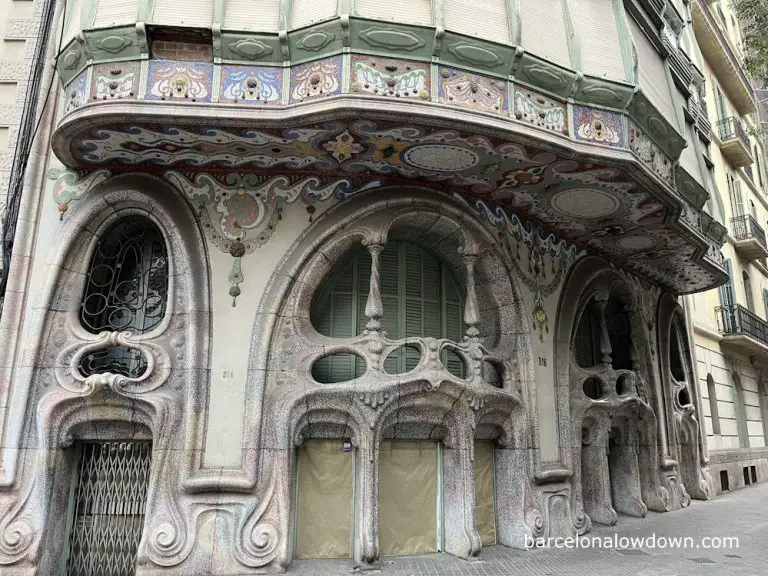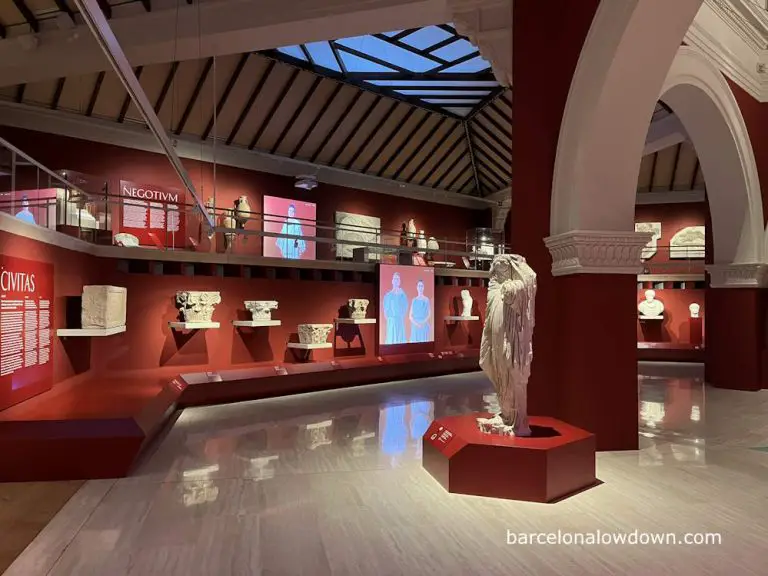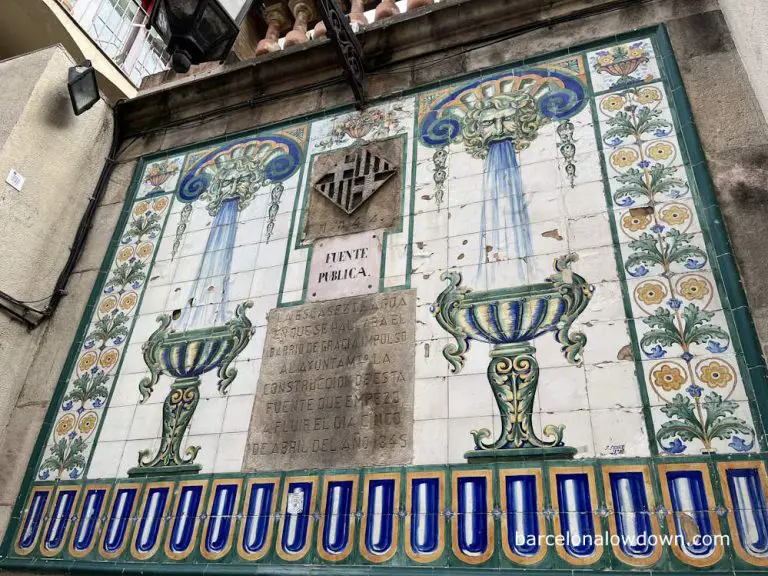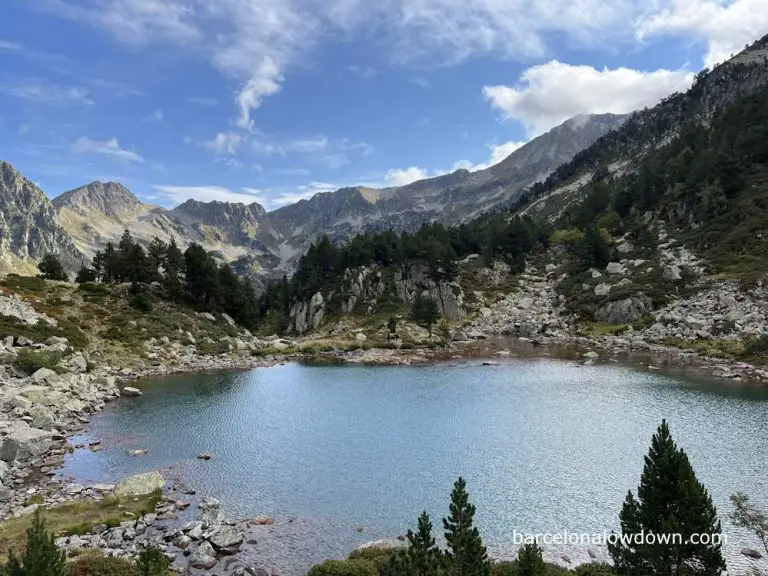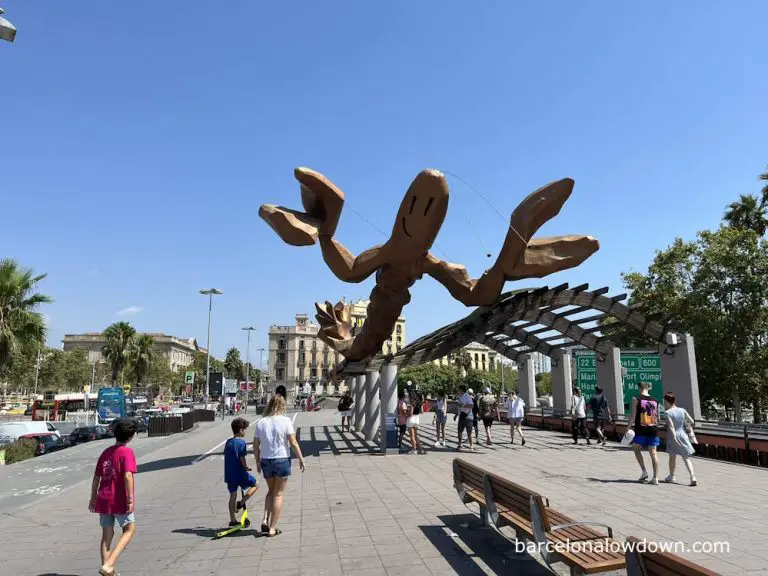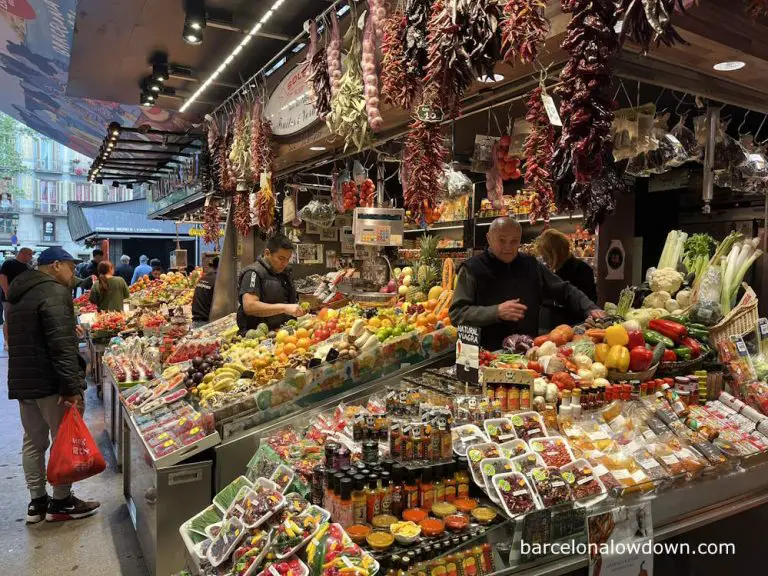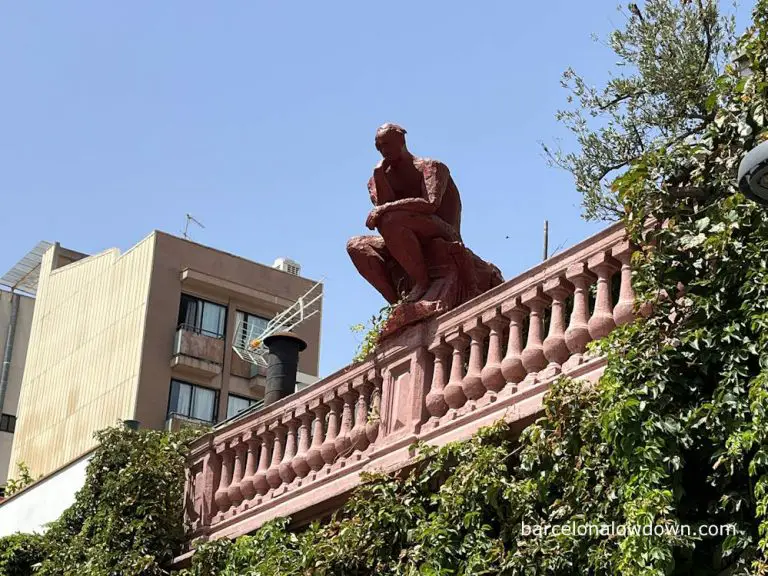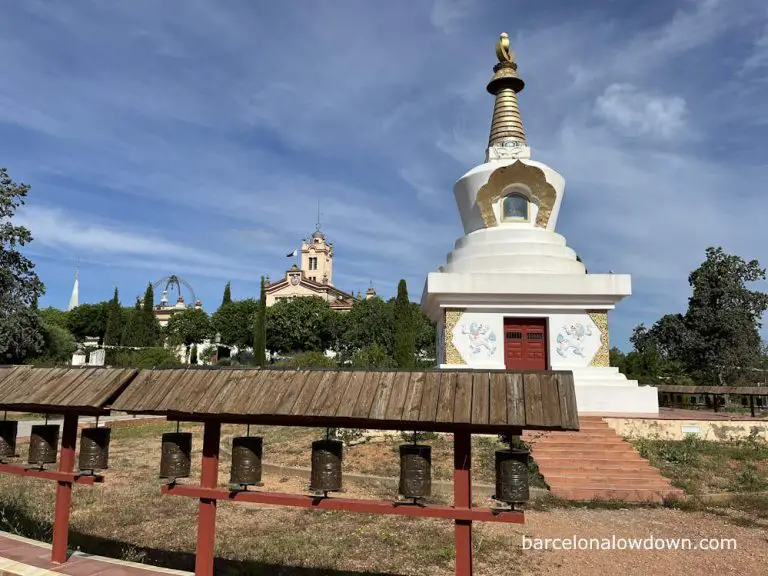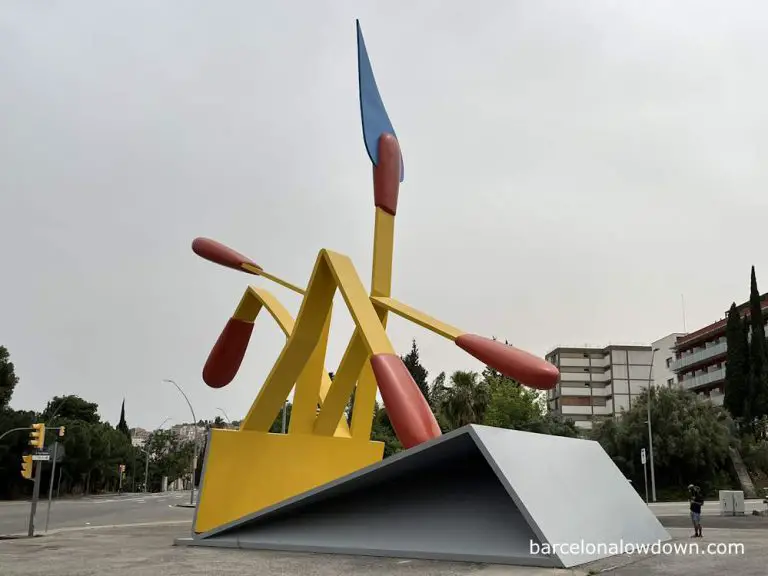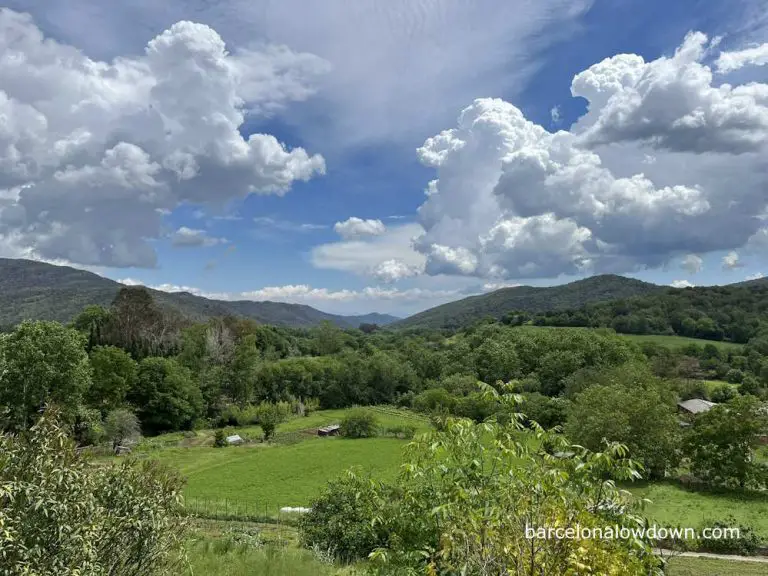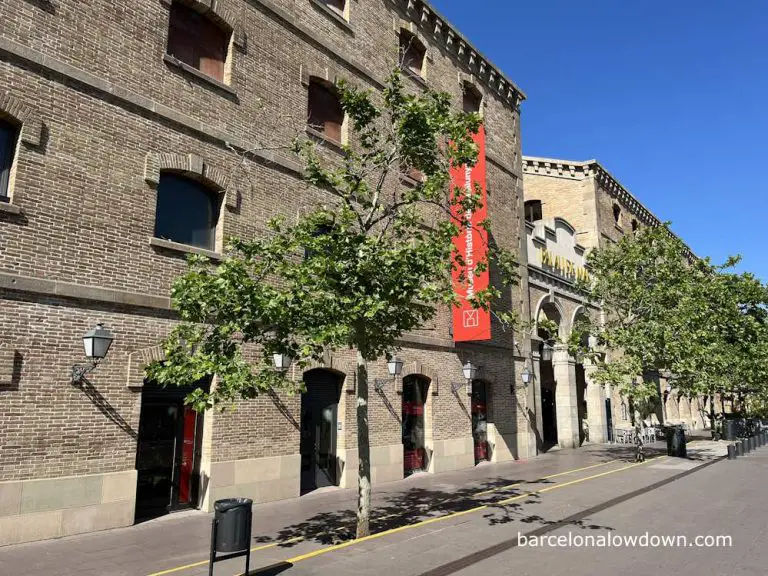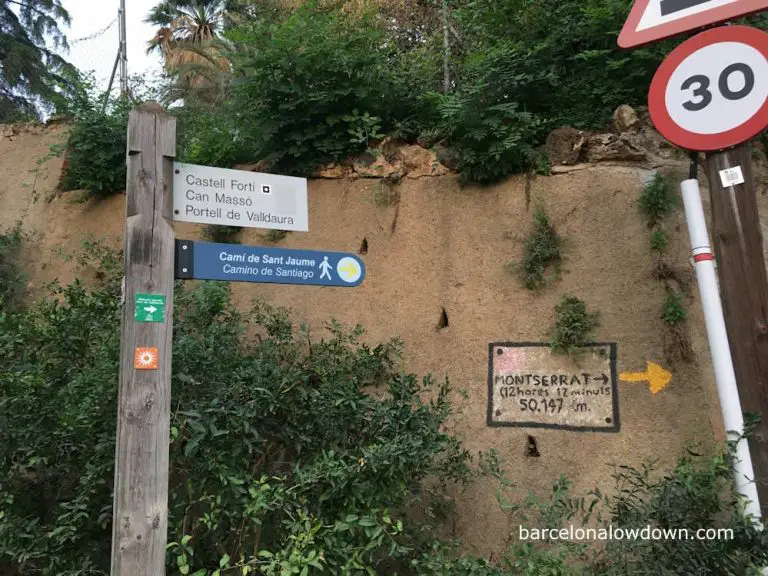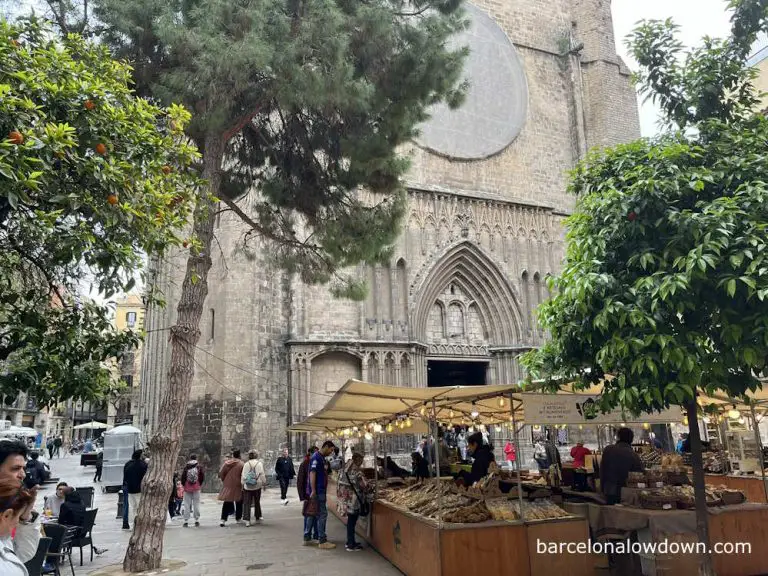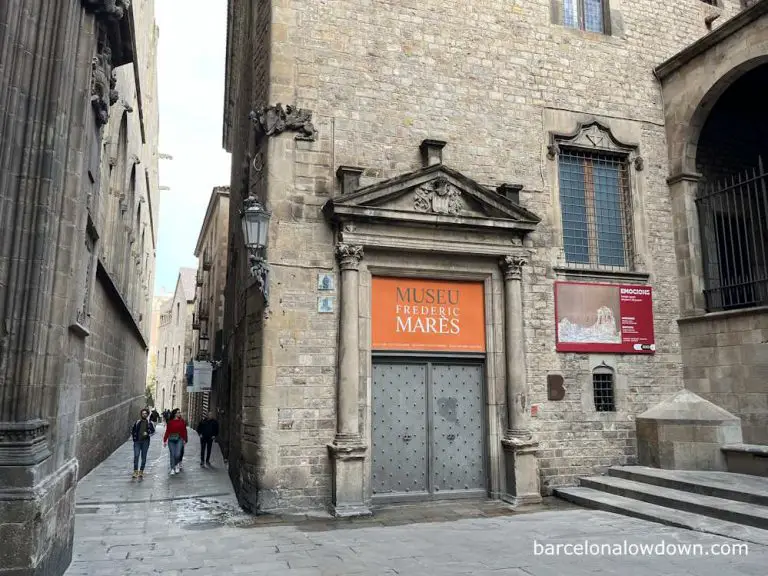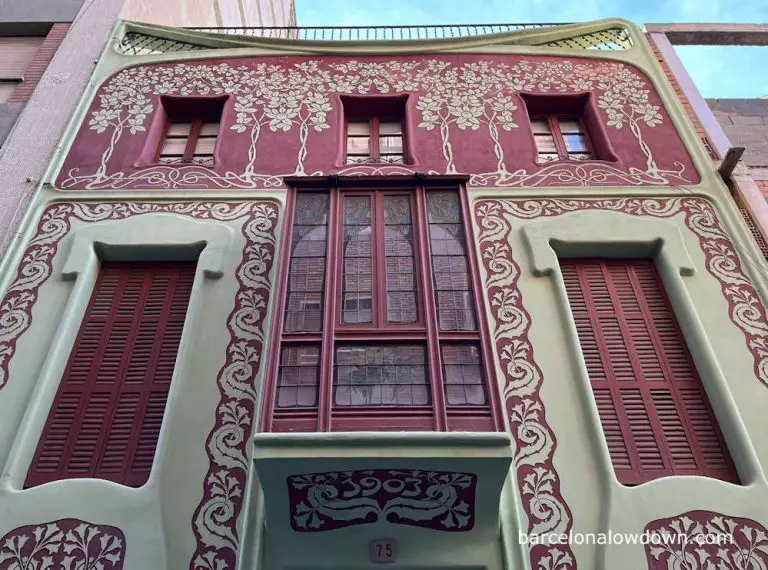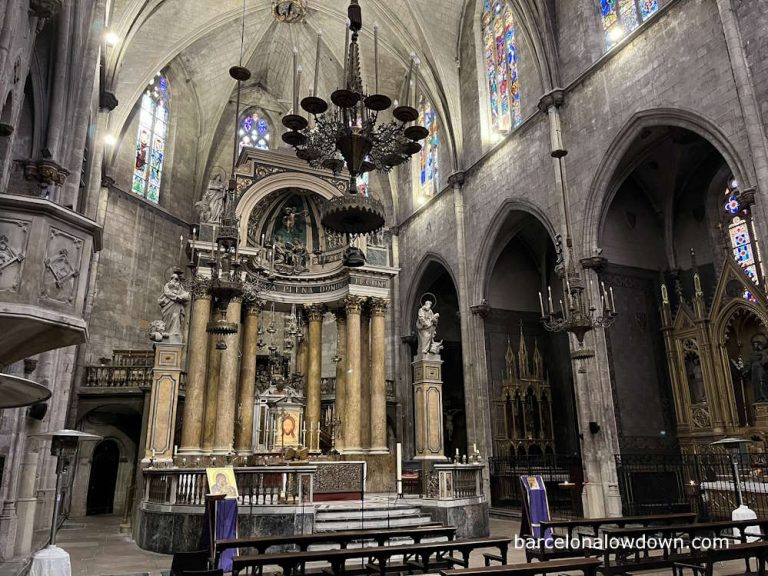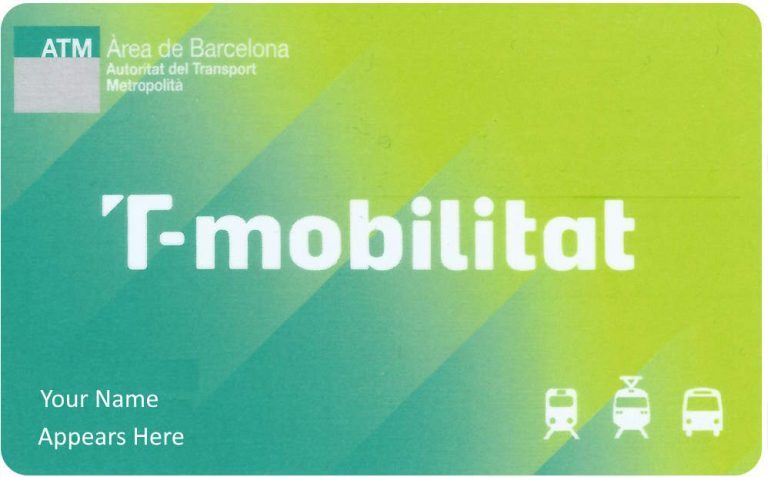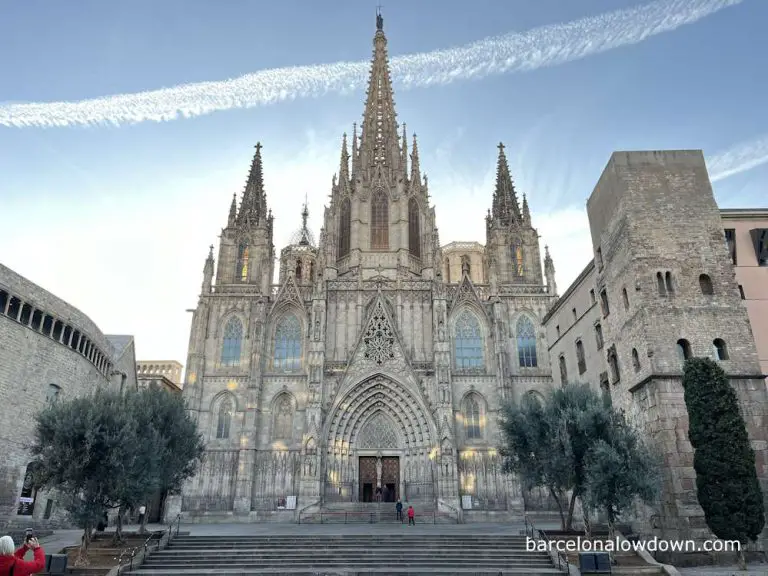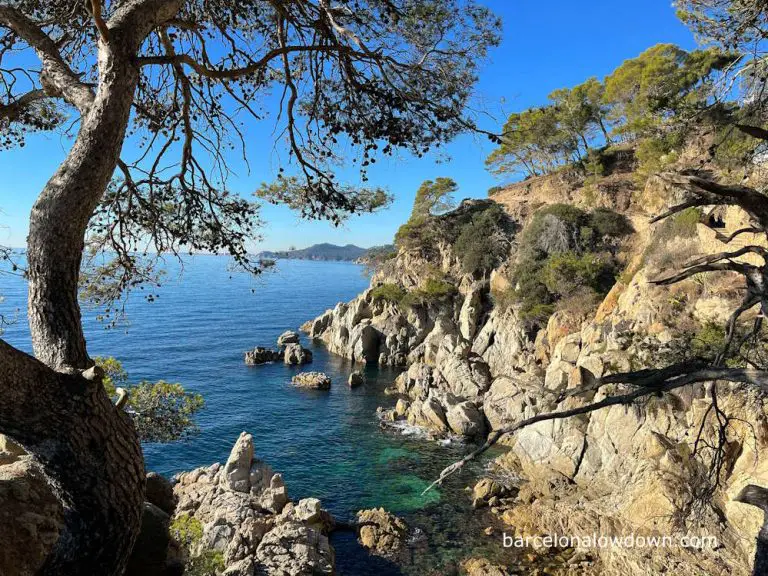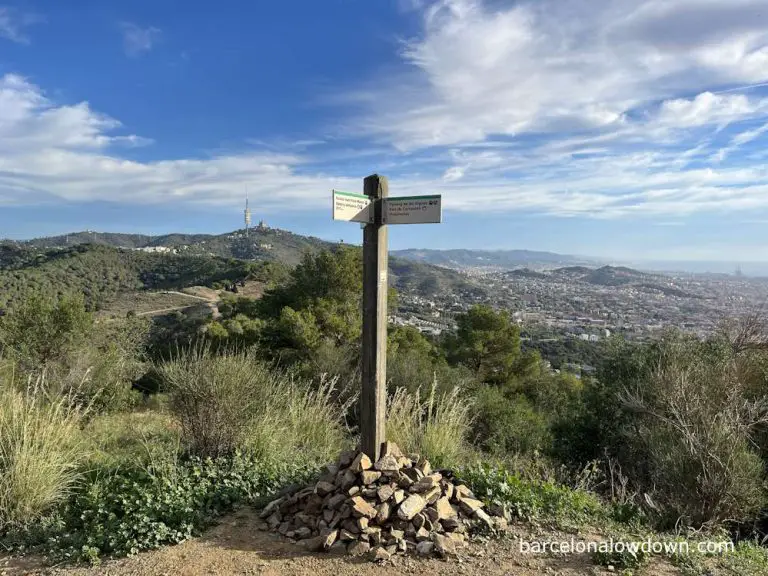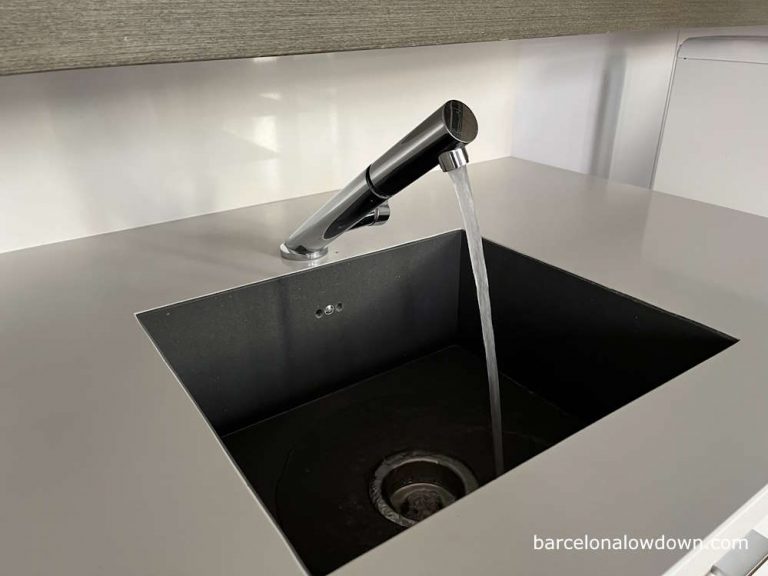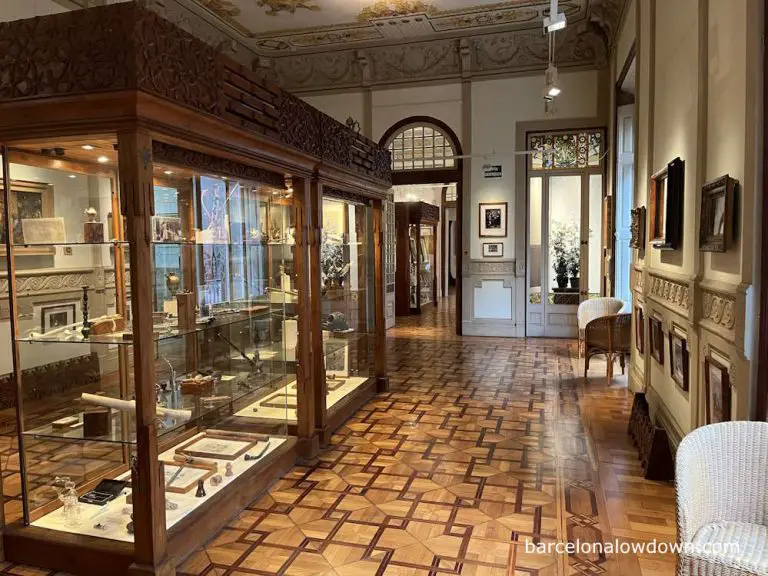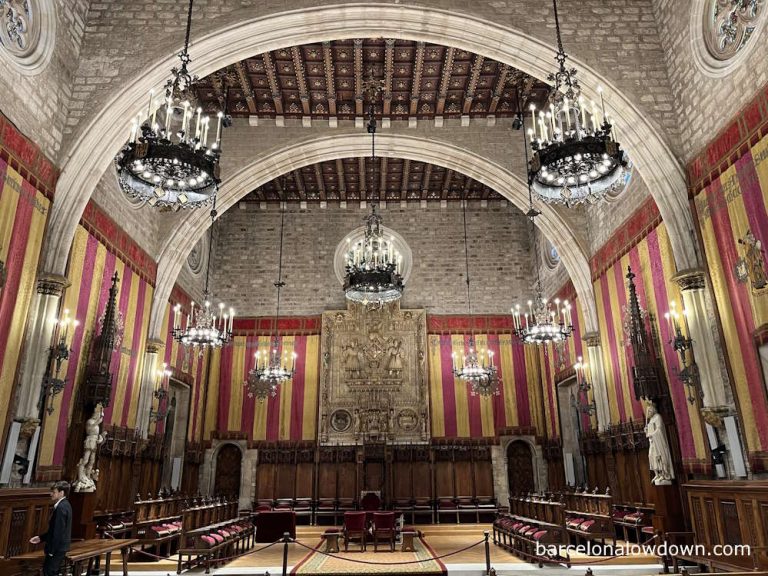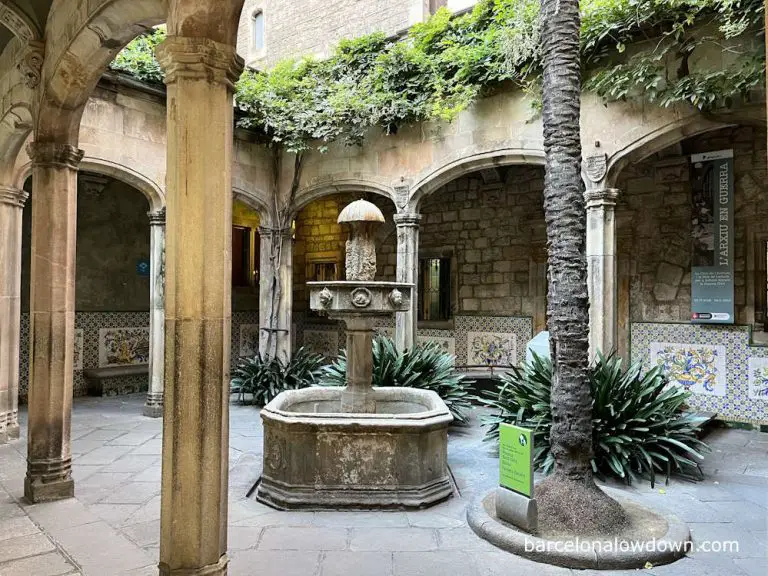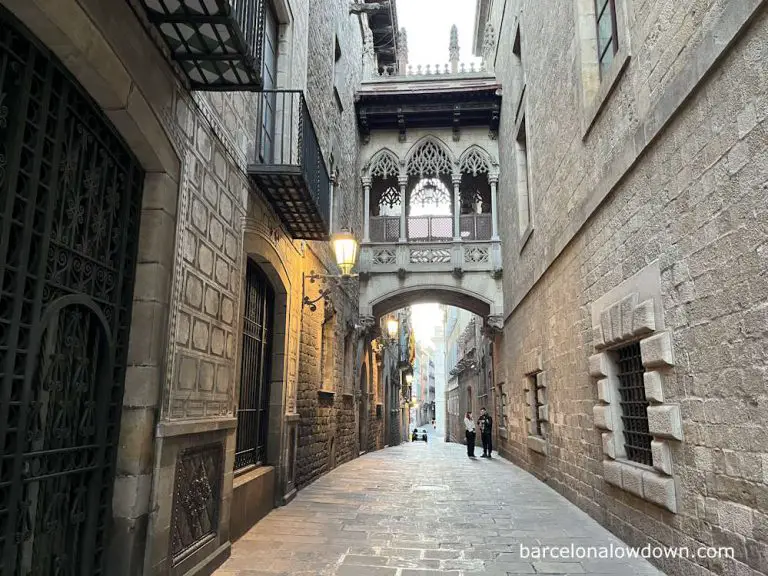Casa Bonaventura Ferrer is an impressive Modernista-style mansion on Passeig de Gràcia, close to La Pedrera and Casa Batlló. Built in 1905 and designed by the Catalan architect Pedro Falqués Urpí, the building was originally a private residence. In 2010, it was restored and converted into a luxury hotel called El Palauet Royal Suites. History…
Blog
Walking & Hiking At Montserrat (8 must-do routes for all levels)
Montserrat is a multi-peaked mountain thirty kilometres inland from Barcelona. The mountain is famous for its 13th Century Monastery, which was built to house a statue of the Virgin Mary, discovered in a cave more than a thousand years ago. Although the monastery is impressive, the main reason for visiting Montserrat is to experience the…
L’Empordà by Ernest Maragall
Tucked away in the Jardins de Salvador Espriu, at one end of Passeig de Gràcia, stands this white marble statue of two nudes, which was created to celebrate the 100th anniversary of the birth of Catalan poet Joan Maragall. The Noucentista-style sculpture titled L’Empordà was unveiled in 1961 and is the work of Ernest Maragall,…
Pink Barcino by Lluís Lleó
Pink Barcino is a three-metre-high stone monolith commemorating the 200th anniversary of Passeig de Gràcia, Barcelona’s most elegant and exclusive boulevard. The statue, which stands at the intersection with Avinguda Diagonal, was created by Barcelona-born artist Lluís Lleo and is estimated to weigh eight tons. Lleó designed the statue to pay homage to Barcelona’s Roman…
Casa Comalat: A little-known architectural gem in Barcelona
During the nineteenth century, Barcelona’s economy was booming, thanks to a thriving textile industry and strong international trade. One outcome of this growth was the construction of a new district called l’Eixample, where affluent businessmen commissioned architects to design lavish houses in the then-popular architectural style known as Catalan Modernism, which is the local version of Art Nouveau.…
Archaeology Museum of Catalonia (Museu d’Arqueologia de Catalunya)
The Archaeology Museum of Catalonia (Catalan: Museu d’Arqueologia de Catalunya) boasts a collection of more than 50,000 objects that illustrate the region’s development from prehistoric times to the beginning of the Middle Ages. Established in 1902, the Archaeology Museum of Catalonia is one of the oldest museums in Barcelona. Initially located in the Parc de…
The Public Fountain of Travessera de Gràcia
Nowadays, we often take running water for granted whenever we shower or turn on a tap. However, until about a hundred years ago, if you wanted water in your home, you had to fetch it from a public fountain. The first piped, or at least channelled, water system in Barcelona was installed by the Romans,…
Complete Guide to Hiking the Camí dels Bons Homes (GR107)
The Camí dels Bons Homes, or Path of the Good Men, is a long-distance hiking trail that traverses the Pyrenees mountains. The route is approximately 230km long and follows the paths taken by the Cathars as they fled the Inquisition during the thirteenth century. The trail begins in Foix, amongst the hills and woodlands of Occitania, southern France.…
10 Quirky and Unusual Statues You Shouldn’t Miss In Barcelona
The streets of Barcelona are often likened to an open-air art gallery. The city’s parks, plazas, and open spaces are filled with a diverse collection of sculptures of various styles. Alongside classic monuments dedicated to historical figures, politicians, and the ruling elite, there are also many more unconventional and surprising statues that will make you…
Mercat de la Boqueria: Barcelona’s Famous Food Market
Barcelona is famous for its gastronomy, and thousands of foodies flock to the city’s restaurants every year. The vibrant food culture is fueled by a series of historic markets selling the freshest produce supplied by local farmers and fishermen. Each of the city’s neighbourhoods has its own food market, many of which are housed in…
The Thinker of Poblenou
Tucked away in a narrow backstreet in Barcelona’s El Poblenou neighbourhood stands a mysterious, almost life-sized polystyrene replica of Auguste Rodin’s masterpiece, The Thinker. There’s not much information available online about the statue which appears to have been created by a company that built theatrical props, scenery, and backdrops and used to have a workshop…
Hiking From Garraf to Sitges Via the Buddhist Monastery (Sakya Tashi Ling)
Thirty kilometres south of Barcelona, the picturesque seaside town of Garraf is famous for its sandy beach and colourful beach huts. The town also serves as the gateway to hiking in Garraf Natural Park, where there are plenty of easy trails to explore. One of the most popular routes in the area is a twenty-kilometre…
Els Mistos: The Matches Sculpture by Claes Oldenburg and Coosje van Bruggen
Els Mistos is a twenty-two-metre steel statue of a book of matches, which was inaugurated in 1992 in the Vall d’Hebron neighbourhood of Barcelona. The monument, which was created by Claes Oldenburg and Coosje van Bruggen, depicts an open book of matches, one of which is burning with a blue flame. Some of the giant…
Five-Day Hike From Vic To Besalú (Multi-day hike near Barcelona)
Spain is crisscrossed by a network of long-distance hiking trails called Senderos de Gran Recorrido, or GR footpaths. These trails usually take anywhere from a few days to several weeks to complete, making them ideal for hikers seeking a multi-day trek. This post describes a five-day hike that combines the most scenic sections of two…
History Museum of Catalonia (Museu d’Història de Catalunya)
As its name implies, The History Museum of Catalonia is entirely dedicated to explaining the history of Catalonia. The museum is located in the Port Vell harbour and is housed in the only remaining building from the original nineteenth-century dockyards, built during the height of the Industrial Revolution. The museum is divided into two floors.…
Walking the Camino de Santiago from Barcelona to Montserrat (A pilgrim’s guide)
The Camino de Santiago is the world’s best-known Christian pilgrimage trail and hundreds of thousands of people set out to walk it every year. The history of the Camino de Santiago can be traced back to the Middle Ages, and although nowadays, most pilgrims only walk the 100-kilometre section from Sarria to Santiago de Compostela,…
Basilica of Santa Maria del Pi (Visitors guide and history)
The Basilica of Santa Maria del Pi is located in the heart of Barcelona’s Gothic Quarter, near Las Ramblas and the famous Boqueria Food Market. The basilica dates back to the fourteenth century and is known for its large Rose Window, one of the largest in Catalonia. However, the main reason for visiting the basilica…
The Frederic Marès Museum (Visitors Guide)
The Frederic Marès Museum is located in the heart of Barcelona’s Gothic Quarter, in an impressive medieval building that was formerly part of the Royal Palace. The museum boasts an extensive collection of medieval sculptures as well as tens of thousands of everyday items, which provide insight into the lives of Barcelona’s upper class during…
Casa Pàdua: The Green and Red Art Nouveau House at 75 Pàdua Street
Barcelona is famous for its striking Art Nouveau architecture, which attracts millions of tourists every year to visit iconic landmarks such as the Sagrada Familia, La Pedrera, and Casa Batlló. Apart from these well-known sites, which are open to the public, hundreds, if not thousands, of other Art Nouveau buildings are scattered throughout the city,…
Basilica of Sants Màrtirs Sant Just i Pastor
The Basilica of Sants Màrtirs Sant Just i Pastor dates back to the fourteenth century and was built on the ruins of a fourth-century church, which was itself built on top of a pagan temple dedicated to the deity Mithras from Greco-Roman mythology. The church’s plain exterior, typical of Catalan Gothic architecture, belies the beauty…
T-Mobilitat: Barcelona’s New Contactless Travel Card
T-Mobilitat is the new contactless ticketing system that replaces the old cardboard travel passes that were used on public transport in Barcelona until spring 2024. In this post, we take a look at what the T-Mobilitat is, how it works, what formats are available, and how you can use it when travelling by public transport…
Barcelona Cathedral: A Complete Visitor’s Guide
Barcelona’s magnificent Gothic cathedral dates back to the thirteenth century and is one of the city’s oldest and most historic buildings. The cathedral is famous for its ornate Neo-Gothic façade, peaceful cloister and stone gargoyles that channel water from the roof. Other highlights include the elaborately carved choir stalls and the crypt containing the remains…
Complete Guide to Hiking the Camins de Ronda (Costa Brava Coastal Path)
The Camins de Ronda are a series of historic footpaths that run along the Costa Brava, one of Spain’s most beautiful sections of coastline. The paths date back more than a thousand years and were originally used by fishermen to travel from village to village. From the mid-nineteenth century, the paths were used by the…
Walking the PR-C 171 in Barcelona: From Zona Universitaria to Trinitat Nova
The PR-C 171 trail is an easy twenty-kilometre hike through the Collserola mountain range, which visits the peaks of Sant Pere Màrtir, Tibidabo and El Turó de Santa Maria and offers breathtaking panoramic views of Barcelona, along the coast, and inland towards Montserrat and nearby cities like Sant Cugat del Vallès. The trail takes between…
Can You Drink the Tap Water in Barcelona?
If you’re planning a trip to Barcelona you’re probably wondering whether the tap water in Barcelona is safe to drink. Yes, tap water in Barcelona is completely safe to drink and is continuously monitored to ensure that it meets the standards established in EU directive 2220/184 and under Spanish law, Real Decreto 140/2023. Both these…
The Hash Marihuana and Hemp Museum, Barcelona
The Hash Marihuana and Hemp Museum in Barcelona is the world’s largest museum that solely focuses on cannabis. The museum, which opened its doors in 2012, explores the history of cannabis and hemp, including their medicinal, cultural, industrial, and recreational uses. The museum is located in a medieval palace in the Gothic Quarter, where it…
Visiting Barcelona City Hall: Everything You Need to Know
Barcelona’s City Hall is an impressive example of Gothic architecture that has served as the local government’s headquarters since its construction in 1369. Like many other buildings in Barcelona’s Gothic Quarter, the city hall has been subject to various modifications and additions. However, despite all the changes, parts of the interior have remained unchanged since…
Casa de l’Ardiaca: The Archdeacon’s House
The Casa de l’Ardiaca is a small Gothic building tucked away in plain sight, near the main entrance to Barcelona Cathedral. The building, which is currently home to the city’s historic archive, dates back to the twelfth century when it served as the residence of the archdeacon, a high-ranking member of the clergy. Despite being…
Exploring Barcelona’s Gothic Quarter: A Perfect Half-day Itinerary
With over two thousand years of history, Barcelona’s Gothic Quarter is a labyrinth of narrow streets and striking Gothic architecture that dates back to the Middle Ages and the times of the Roman Empire. Located between Plaça de Catalunya and the Port Vell Harbour, the Gothic Quarter is the heart of the Old City and…
Pont de Mühlberg: Barcelona’s Love Lock Bridge
Love locks have become a common sight in European cities since the early 2000s, after the release of the Italian film Ho Voglia di Te (English: I Want You). In the movie, two lovers inscribed their names on a padlock and attached it to a bridge in Rome. Since then, the tradition has spread, and…

